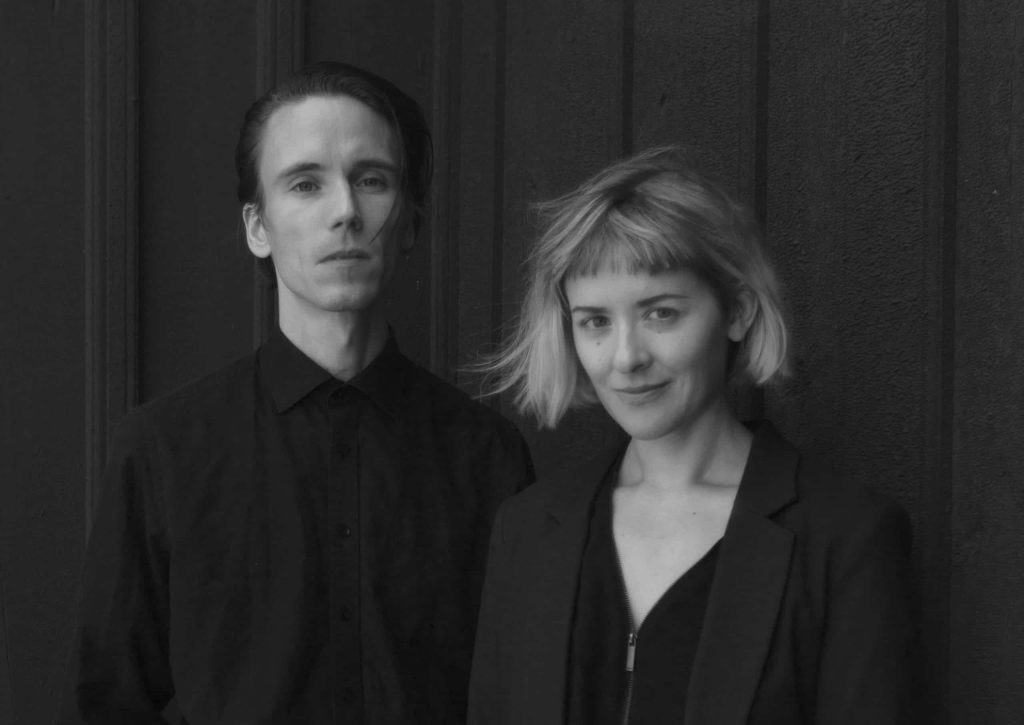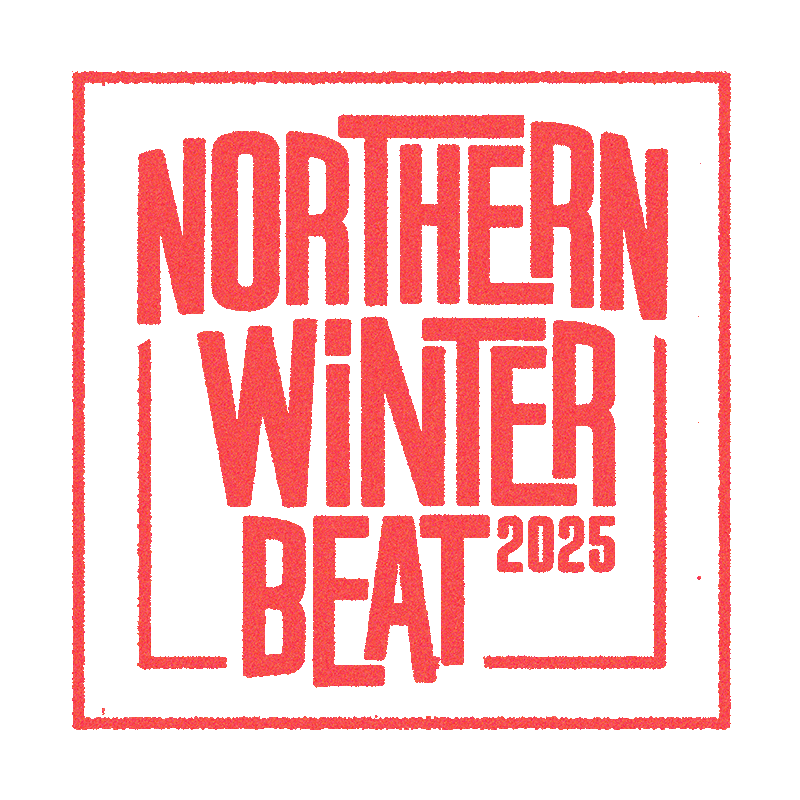NORTHERN WINTER READ:
MARIA W. HORN

Once again, Budolfi Cathedral will provide the setting for a very special performance at Northern Winter Beat. This time Maria W Horn will bring Mats Erlandsson, and together they will present an array of pieces for four-handed organ and electronics.
by Mikkel Brandt
Take a listen to Maria W Horn’s latest record, and read our e-mail interview with her below.
(Maria W Horn – Epistasis: https://mariawhorn.bandcamp.com/album/epistasis)
How will you describe your musical universe and artistry?
“My compositions use minimalist structures to explore the inherent spectral properties of sound. As my background is in electroacoustic composition I often utilize analog synthetic sound or acoustic instruments paired with digital synthesis and processing techniques to achieve the results I’m looking for.”
When did you start making music?
“I started playing electric bass in punk and folk bands in my hometown. The feeling of playing in a band as a teen, that direct sincerity is something that I am probably trying to recreate in all of my projects, the dead-serious and naive ‘us against the world’s mentality, which was probably further enhanced by growing up in such a small town where even a small deviation from the norm would get you labeled as an outcast.
I signed up for an evening class in electroacoustic music composition at a local education center in my hometown Härnösand, I think I was 16 at the time, and electroacoustic music completely changed my musical thinking and opened up new realms for me in terms of how music could be made and how it could sound.
This path eventually led me to Stockholm to continue my studies at the Royal College of Music. During my time there I gravitated towards exploring harmonic and timbral aspects of slowly evolving music.“
Which compositional tools do you use?
“One of my main tools is the musical programming language SuperCollider, a compositional environment that provides precise control of timbre, tuning and texture. I am interested in designing my own systems for synthesis and processing from scratch, as it makes the feedback mechanism between myself and the resulting sound more intimate.
This is an ongoing practice that will never be finished, but I am trying to increase my understanding of how sound is generated in the digital domain, which in the long run makes it easier for me to create more personal sound worlds.“

How do you use algorithms in your work?
“In my work I often aim for the music to evoke a certain state of mind or to behave in a specific way. I write the code instructions with a certain idea in mind, execute the code and listen to the resulting sound, then adjust the code gradually to shape the resulting sound in accordance to my original idea.
So, this means there is a pendulum movement between listening to the sound output and changing the instructions of the algorithms that generate the sound. Since I use a lot of indeterminacy in my work the output from the code will never be exactly the same, and this in turn gives each piece the potential of endless variation.
Since I started using algorithmic processes my focus on the inherent spectral properties of sounds increased, along with a less linear conception of musical time.”
Which pieces will be presented at your concert at NWB?
“In this performance me and Mats Erlandsson will present an array of pieces using amplified and electronically treated organ in combination with fixed synthetically generated sound. In this way we aim to create a kind of hybrid instrument where the timbre of the organ and the acoustic properties of the room is spectrally enhanced and transformed, yet still anchored in the harmonic language associated with the body of music traditionally performed on the organ.“
The performance includes a live presentation of the piece “Konvektion”. What were the main influences for that piece?
“The name Konvektion refers to molecules in movement or streams of air in a room. As the organ is a wind instrument this means that the massive streams of air vibrated by the pipes move through the room. By analogy this is matched by the duration of each chord in the piece being decided by the breathing tempo of each of the two organists required to play the piece. By counting their breathing as a way to determine the length of each chord, I wanted to connect the idea of external airstreams in a room with the internal airstreams moving through the lungs of the performers.
The harmonic structure of the piece is inspired by Arvo Pärt’s Tintinnabuli technique, where step-by-step diatonic movement interplay with triads to form a complex harmonic function still rooted in tonality. Simultaneously an electronic part composed of interference tones creates high and low register beating patterns and pulsations working as a sort of acoustic vertical frame to the organ sound itself.”
Can you describe the instrumentation and setup for the concert at NWB?
“In this setup I am processing the sounds of the organ using a feedback instrument built within the SuperCollider framework. In this way I can control several layers of sound, their pitch and amount of amplification and feedback. I think it is interesting to use controlled feedback in this way as it works as a kind of double exposure – harmonic resonances being superimposed on the space that formed them, resulting in an enhancement of the acoustic properties of the room.”
Can you tell us a bit about your collaboration with Mats Erlandsson? When did you start working together?
“We have been a couple since several years back and started collaborating on music in 2016 when we traveled to the Terres de L’Ebre region of Catalonia for a two-week residency where we decided to make a musical work based entirely on field recorded material from the region.
This was followed by a trip to Vardø, a municipality in Finnmark county in the extreme northeastern part of Norway, close to the Russian border. At the moment we are working with the recordings that we did in Vardø as a part of a commissioned work for the GRM that will be premiering in April 2022.
Our collaboration is shaped by the idea to work with what we have in our immediate surroundings, something that comes naturally at a residency or when working with specific places, landscapes, rooms. There’s a beauty in working with what you got at hand, rather than trying to construct the perfect setting, as these natural constraints can bring fourth interesting approaches and new ways of working – something that is especially useful in collaborations.”
(Maria W Horn & Mats Erlandsson – Stigsjö Kyrka: https://mariawhorn.bandcamp.com/album/stigsj-kyrka-organ-rehearsal-tape)
How will you describe him as a musician?
“As a musician Mats is very precise and knowledgeable, with a great sensibility for details.
In his own music he knows what he wants and rarely sees any reason for compromise. At home he plays the guitar non stop, his virtuosity on that instrument is a bit of a hidden skill that I think influences his approach to synthesized sound a lot.
Thus far the repertoire of the organ shows have consisted of my compositions, but he always comes with great input in terms of arrangement and registration. I consider it a very intimate act to perform these four-handed pieces, it would not work with just anyone, so I am very glad to have him by my side.”
(Mats Erlandsson – Minnesmärke: https://matserlandsson.bandcamp.com/album/minnesm-rke)
What are your individual roles during the concert?
“I am running all of the electronics and processing as well as playing the high register parts of the score and Mats plays the low register and most of the pedals.
Depending on the physical layout of the organ we either handle our register changes individually or help each other out to make each change in time. Neither of us has any formal training as organists although we both have a basic familiarity with keyboard based instruments from studying composition and a bit of piano. One of the premises for me to approach the organ was to base the work on my experience of working with sound synthesis and sound spatialization.”
How are you preparing for the concert?
“Preceding the performance we will have to tune the electronics to be in tune with the organ. This can be a tricky procedure depending on the room, as the pitch of the organ changes with the temperature. When we first get access to the performance space we mainly focus on two tasks – finding appropriate microphone placement to achieve an intimate amplification of the natural organ sound from an audience perspective at the correct volume without feedback, and figuring out the registration i.e. which combination of the pipe organ stops to use for each part of the performance. Due to the size and acoustic properties of the instruments themselves these tasks tend to affect each other to a large extent, which means the whole process requires a bit of time and patience to get right.”

Will there be any improvisation, and what is your approach to that?
“In most of the pieces the notation is kind of strict and does not involve improvisation in terms of what note is played and when, although there is one passage in the performance which contains room for improvisation within certain constraints. Since the performance already has so many variables that need to align in order for this setup to work, I did not feel like adding more. However, when it comes to the registration of each piece there is room to make some decisions on the fly.”
The concert will take place at Budolfi Cathedral. Do you have any specific sonic considerations about that, and how do you think the church room will influence the music?
“I am interested in using the sonic characteristics of a specific room as a starting point in composing music. I have used this approach for several pieces in the past, including an empty machine hall and a closed cell prison, and it’s always a bit of an archaeological excavation or acoustic sociological study. In this sense a space always carries with it an imprint of its history and if you just listen carefully you will hear it.
The pieces that we will perform at Budolfi Cathedral have been assembled in order to enhance the listening and bring forth the acoustic specificities of the organs and the acoustic environments they inhabit, while still being adaptable enough to function well in rooms with different acoustic properties.”
What is your relationship to church rooms? Both personal and as a musical space.
“Due to things that happened in my early upbringing Christian motifs and spaces are charged with a lot of emotion and ambivalence. As a child I spent a lot of time in Stigsjö Kyrka, the church located in the area where I grew up, and I have always been in awe about the glory that these rooms inhabit, the acoustics that imbue everything with a soft-spoken splendour.
Experience Maria W Horn at Northern Winter Beat 2023 January at Budolfi Cathedral.

